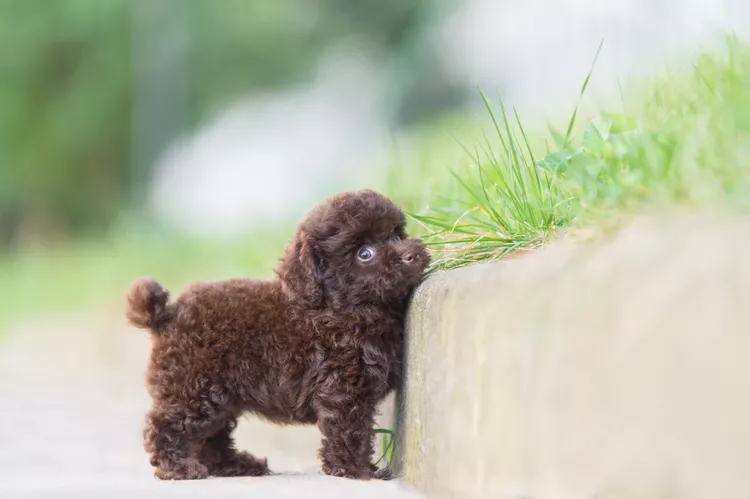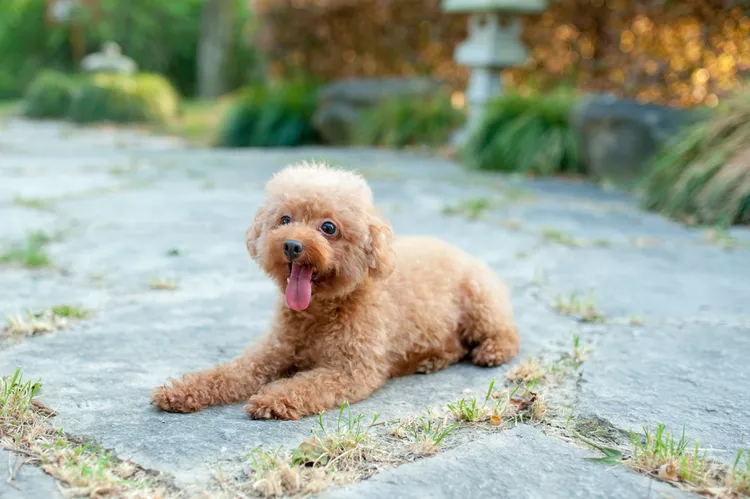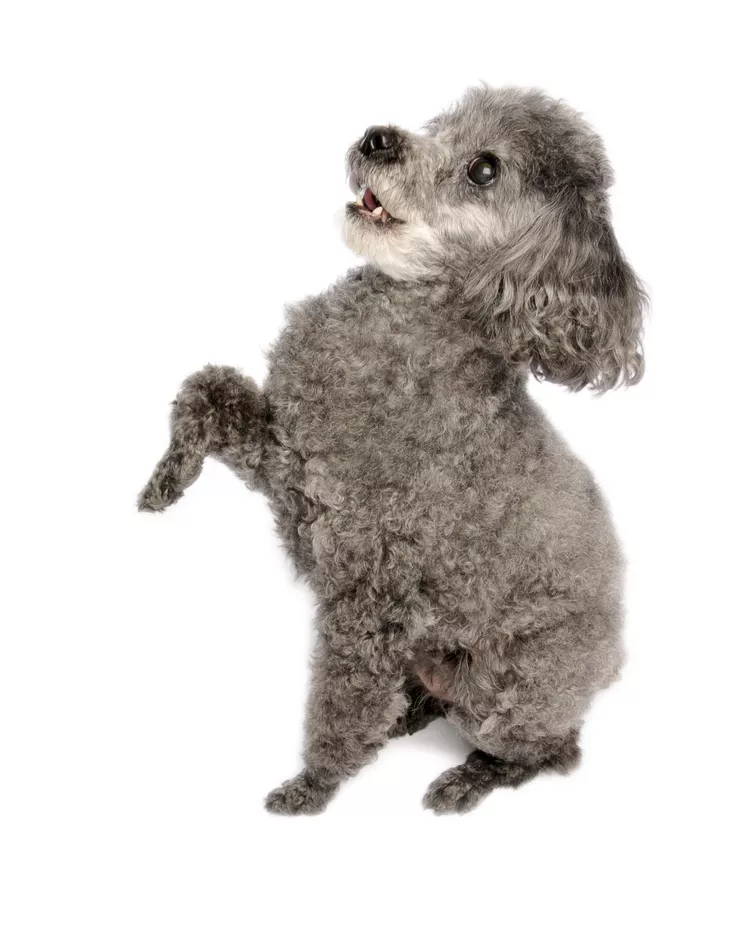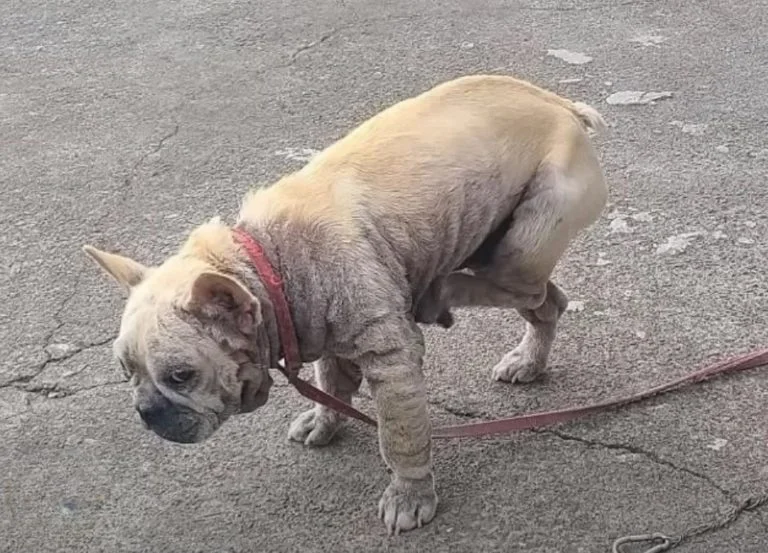History, Care Tips, and Essential Information for Pet Owners
Toy poodles, along with their larger counterparts—the standard and miniature poodles—are renowned for their impressive show performance. Their distinctive curly coat and elegant demeanor make them stand out in the ring. Beyond their show-stopping looks, toy poodles are known for their intelligence, athleticism, and loyalty, making them a great choice for both singles and families.

Breed Overview
- Group: Toy
- Height: 8 to 10 inches
- Weight: 6 to 9 pounds
- Coat: Curly and dense
- Coat Colors: Apricot, black, blue, brown, café au lait, cream, gray, red
- Lifespan: 14 to 17 years
- Temperament: Confident, loyal, intelligent, lively, alert
- Hypoallergenic: Yes
- Origin: France, Germany
Characteristics of the Toy Poodle
Toy poodles are charming and love being the center of attention. Their high intelligence makes them responsive to training, but their affectionate nature can lead to separation anxiety. They are good with children and other pets and thrive in smaller living spaces due to their petite size.
- Affection Level: High
- Friendliness: High
- Kid-Friendly: Medium
- Pet-Friendly: Medium
- Exercise Needs: Low
- Playfulness: Medium
- Energy Level: Medium
- Trainability: High
- Intelligence: High
- Tendency to Bark: Medium
- Amount of Shedding: Low
History of the Toy Poodle
The poodle originated in Germany over 400 years ago as a duck hunting dog. Their thick, curly coat was essential for protection in cold water, while their athleticism and eagerness to please made them ideal retrievers. The distinctive show cut seen today was originally designed to enhance their movement and provide protection during hunting.
Poodles come in three sizes: standard, miniature, and toy. The toy poodle was bred in the early 20th century as a companion animal, particularly suited for smaller living environments. Despite their size, toy poodles have been valued for their intelligence and performance abilities, often seen in circuses. Recognized by the American Kennel Club in 1886 and with the Poodle Club of America founded a decade later, poodles are particularly popular in France, where they are considered the national dog.

Toy Poodle Care
Despite their reputation for being high-maintenance, toy poodles are relatively easy to care for, especially due to their small size.
Exercise
Toy poodles enjoy daily walks and are active, though they don’t require extensive exercise like their larger counterparts. They also enjoy swimming, retrieving, and performing tricks.

Grooming
Toy poodles have a dense, curly coat that requires daily brushing to prevent matting. In case of mats, a short shave might be necessary to help the coat grow back properly. Their low shedding makes them a good choice for allergy sufferers. Regular trims every six weeks can help manage their coat, though it’s also possible to trim at home.
Training
Highly intelligent and eager to please, toy poodles excel in training and can learn various tricks and commands. Their agility and grace make them proficient in various activities, challenging the misconception that they are overly delicate.

Common Health Problems
While generally healthy, toy poodles are prone to certain conditions. Ensure you obtain your poodle from a reputable breeder who tests for common health issues and provides medical documentation. Potential health problems include:
- Addison’s Disease
- Hypothyroidism
- Progressive Retinal Atrophy
Diet and Nutrition
Toy poodles require a balanced diet appropriate for their small size and activity level. Overfeeding can lead to obesity, so portion control is crucial. Choose high-quality food with a good protein and fiber content and minimal fillers. Consult your vet to determine the best diet for your pet.

Where to Adopt or Buy a Toy Poodle
For those interested in purchasing, seek reputable breeders with proper certifications and health documentation. Adoption is also a viable option, though rescue organizations may not always provide detailed health information. Consider the following resources:
- AKC Marketplace
- The Poodle Club of America
- Toy Poodle Rescue
- AdoptAPet
Local breeders and rescues may also have toy poodles available.
Toy Poodle Overview
Pros:
- Ideal for small living spaces
- Intelligent and eager to please
- Low shedding
Cons:
- Requires regular grooming
- Can be vocal
- May be prone to dental issues
Further Research
To determine if a toy poodle is the right fit for you, talk to poodle owners, consult your vet, and explore local breeders. Consider similar breeds such as the standard poodle, Pomeranian, Bichon Frise, Shih-Poo, and Poochon.
FAQ
Are toy poodles good apartment dogs? Yes, their small size makes them well-suited to apartment living with moderate exercise needs.
Are toy poodles aggressive? Generally, no. They can sometimes become intimidated, but with proper training, they can overcome these issues.
What is the difference between a toy poodle and a miniature poodle? The primary difference is size: miniature poodles are 11 to 15 inches tall, while toy poodles are up to 10 inches.





